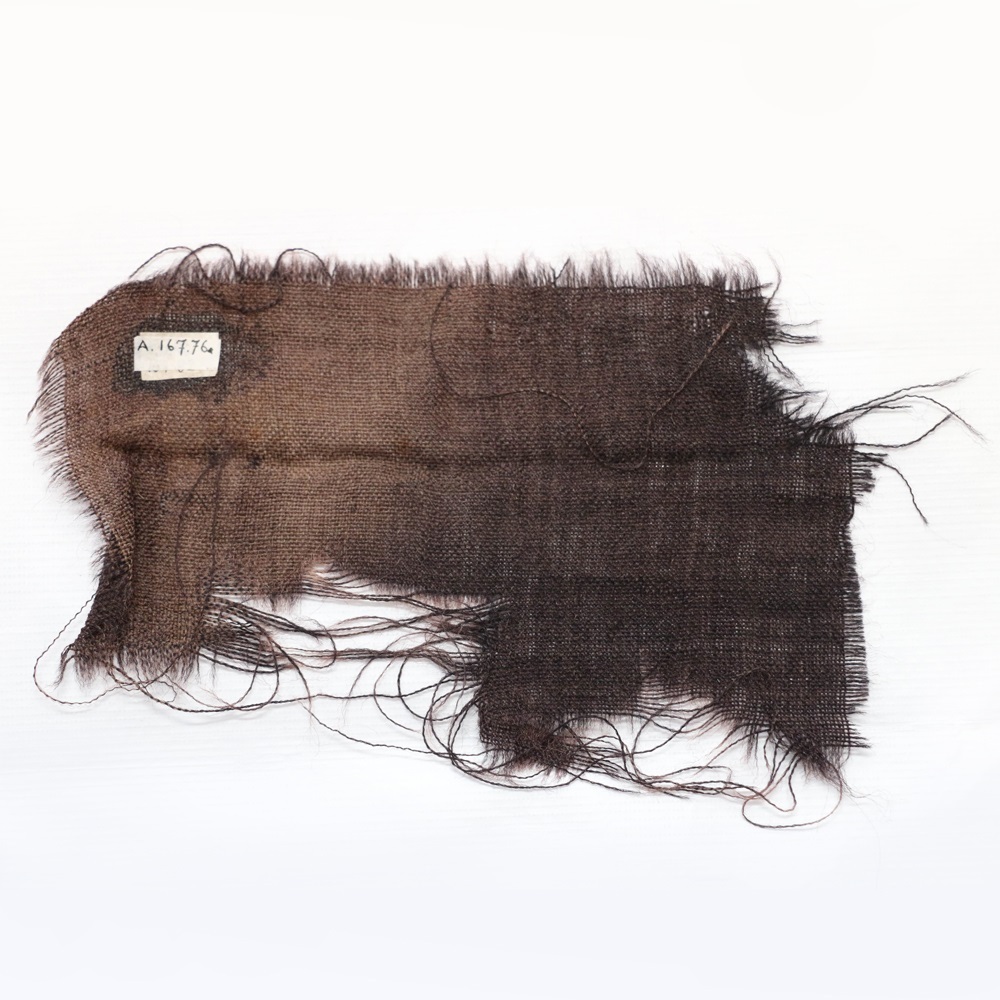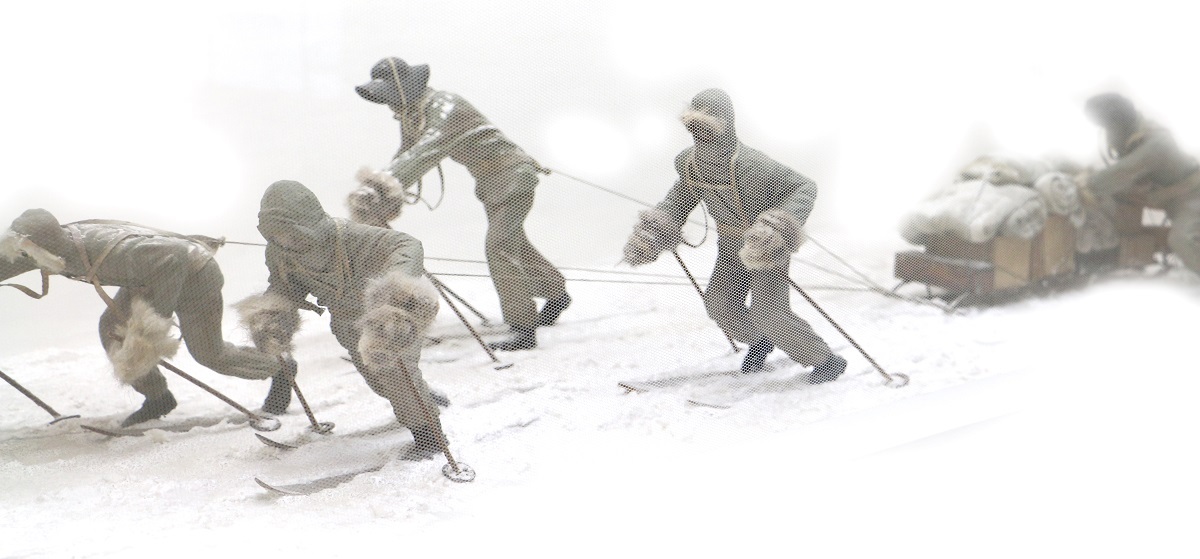Whether raised in respect or carried into war, flags are the symbols of unity that can often outlive those they represent. Many of the flags in the Museum’s collection are wind-tortured, soiled or fragmented from years of use.
One of the flags in our textile collection boasts very few of its original characteristics. This fragment appears brown and threadbare, though it is believed to be the sun-bleached blue of the Union Jack. It is a poignant keepsake from the tragic British Antarctic Expedition to the South Pole (1910–1913).

Captain Robert Falcon Scott and his Polar Party reached the geographic South Pole on 17 January 1912. Despite their efforts to be the first men there, they were met by a Norwegian flag and a note confirming that Roald Amundsen and his team had beaten the British by a month.
This flag fragment was discovered in a tent on the Ross Ice Shelf with the frozen bodies of Captain Scott, Dr Edward Wilson and Henry ‘Birdie’ Bowers. The men had sought refuge after being caught in a blizzard 18 km from One Ton Depot, their next hope of shelter and supplies.
‘Had we lived I should have had a tale to tell of the hardihood, endurance and courage of my companions which would have stirred the heart of every Englishman. These rough notes and our dead bodies must tell the tale: but surely, surely, a great rich country like ours will see that those who are dependent on us are properly provided for.’
(Signed) R. Scott. 25th March, 1912
For more stories and artefacts from Scott's expedition, visit the Museum’s Antarctic Gallery.
You can see the virtual copy of Captain Scott’s expedition diaries by following the link below to The British Library’s Turning The Pages here






